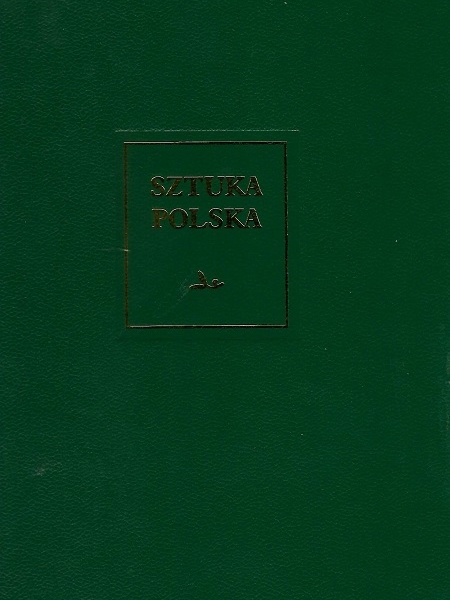SZTUKA POLSKA - Sztuka XIX wieku (z uzupełnieniami o sztukę Śląska i Pomorza), JERZY MALINOWSKI (ed.)
Spis treści: JERZY MALINOWSKI, Wstęp; KRZYSZTOF STEFAŃSKI, Architektura; MAŁGORZATA SZAFRAŃSKA, Ogrody i parki; PIOTR SZUBERT, Rzeźba; JERZY MALINOWSKI, Malarstwo i rysunek; WANDA MARIA RUDZIŃSKA, Grafika; LECH LECHOWICZ, Fotografia; EWA WIERUCH-JANKOWSKA, Rzemiosło artystyczne; JERZY MALINOWSKI, Zakończenie.
Uzupełnienie - Śląsk i Pomorze Zachodnie: KRZYSZTOF STEFAŃSKI, Architektura na Śląsku i Pomorzu Zachodnim; EWA GROCHOWSKA, Rzeźba na Śląsku i Pomorzu Zachodnim; PIOTR ŁUKASZEWICZ, Malarstwo na Śląsku; DARIUSZ KACPRZAK, Malarstwo i rzeźba na ziemiach Pomorza Zachodniego.
Wydawnictwo Arkady, Warszawa 2021; ISBN 978-83-213-4836-0 (616 s.)
The art of the 19th century occupies an exceptional position in the history of Polish culture and its national consciousness. The political situation of a nation deprived of its own state was responsible for imparting this distinctive aspect. Fundamental civilising developments nevertheless took place in the territory of the former Commonwealth. Industry and communications flourished, modern cities developed, and the cultural landscape was transformed dramatically. An emerging mass culture had access to new techniques of visual transmission, such as lithographs printed in large editions, wood engraving and photography, thanks to which illustrated periodicals came into being. Institutions were established to promote intellectual and artistic life, including schools, museums, galleries and theatres. An art making reference to the Polish cultural tradition was created, with the aim of defending national identity, while at the same time associated with Europe-wide intellectual and artistic currents. From the 1840s Poles participated in European artistic life, particularly as large groups of Polish painters and other artists settled permanently in France, Italy and Bavaria. The success at the Paris Salon of paintings by Stattler and Rodakowski (Delacroix acknowledged the latter’s portrait of his mother as a masterpiece), and works by Matejko, Brandt, Siemiradzki and Czachórski at other international exhibitions, introduced Polish art to the awareness of a European audience.
Volume constitutes a comprehensive synthesis of Polish art in the 19th century. It encompasses architecture, painting and drawing, the graphic arts and photography, as well as the applied arts. In addition, it is supplemented by a survey of the art of Silesia and Western Pomerania.






























































